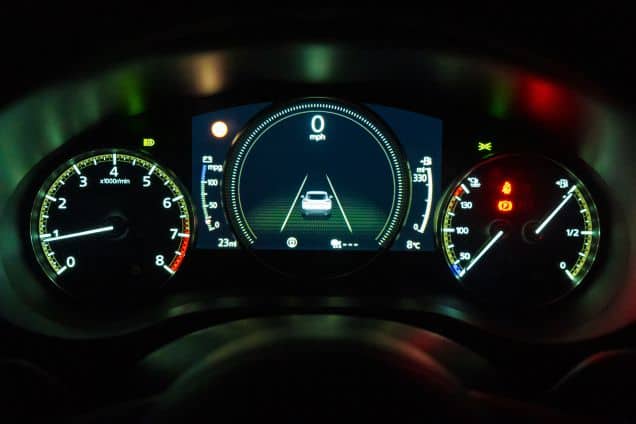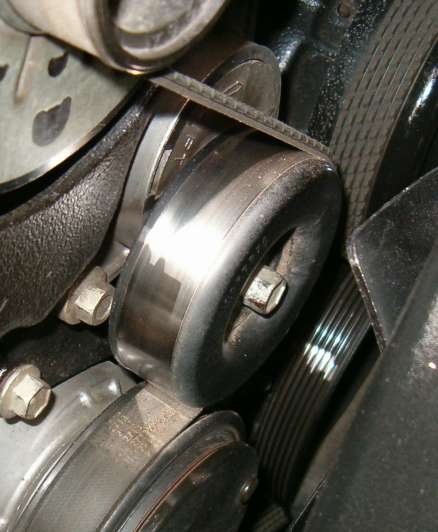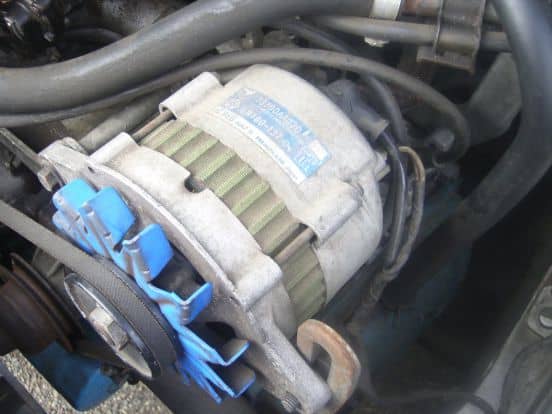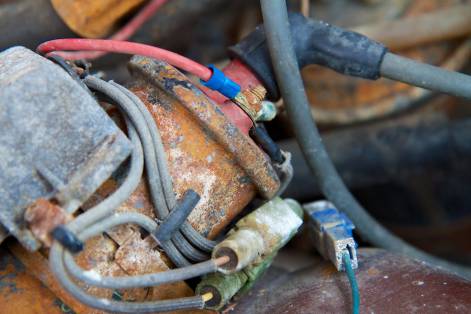The battery is one of the most important parts of your vehicle. It powers many other components, and yet we don’t always keep the closest eye on it. Usually, something has to go completely wrong with our vehicle before we take a look at the battery gauge.
If you recently noticed that your car was jerking during ignition, you might have decided to take a moment to glance at your battery gauge on your dashboard. That’s when you realised that the needle is fluctuating when your vehicle is idling, though it’s steady when the car is driving.
While this isn’t a problem in and of itself, it can be a signifier or a symptom of a larger issue. That’s why it’s a good idea to investigate and try to figure out the reason why the battery gauge is fluctuating whenever your car is idling.
Why does the battery gauge fluctuate at idle?
Here are some of the reasons why your battery gauge is fluctuating at idle
- Faulty serpentine
- Alternator not working
- Wire corrosion
We’ll get into a detailed description of each issue, how you can diagnose it and solve it on your own without spending a fortune at the parts store or calling a mechanic home.
There are other things that can go wrong with your battery. Maybe the battery lights are on but the alternator isn’t charging. If that better describes your issue, check out our article here.
Table of Contents
Top 3 Reasons Why Battery Gauge Fluctuates at Idle
A fluctuating battery gauge is a symptom of something having gone wrong. You might be wondering why this is so concerning. Shouldn’t the battery fluctuate as it is distributed to the sound systems, windows, and other components while we’re driving the car? That makes sense — if you don’t know about the role that the alternator has to play.

The alternator is supposed to supply power to the battery and this equal exchange of power should be in such a way that the battery never fluctuates and always remains at a constant value. The battery gauge is essentially a voltmeter reading that is connected to the battery itself and reads the voltage on your dashboard for your convenience.
Here are the top 3 reasons why your battery gauge isn’t doing what it’s supposed to be doing (staying steady) and is fluctuating instead:
Reason #1: Faulty Serpentine
The Serpentine or Drive belt is an often overlooked but extremely important part of your car. The serpentine is responsible for working inside the accessory drive belt system. It has the crucial role of delivering antifreeze to the engine, and ensuring that the hydraulic pump works efficiently. You cannot drive a car that doesn’t have a working serpentine or drive belt inside of it, because it will stall the necessary movements and motions inside the car between different components.

The belt is also what is responsible for making a connection between the alternator and the battey. This means that if the belt is not working, there’s no voltage travelling from the alternator to the battery.
It’s not very expensive to replace the serpentine, but a common mistake that people make is to overlook the serpentine and directly source a replacement alternator which can be much more expensive. That’s why you should first look at the serpentine so you can rule out this option in your troubleshooting process.
Solution: When you’re checking out the serpentine, you want to focus on a couple of things. You want to first ensure that there are no signs of wear and tear on the serpentine itself. Sometimes, you’ll be able to visually tell that the belt has some holes or looks stretched out and not in the best shape.
If the belt has been coming in contact with any sharp edges inside the car, it could have gotten cut in areas as well. This is a good bit of proof that it’s time to source a replacement serpentine or drive belt.
You might also notice that the serpentine or drive belt looks new and undamaged, but it’s hanging loose and is not taut and tight as it should be. This can also be a cause for concern and it’s a good idea to tighten the belt.
Reason #2: Alternator/Battery not working
As much as we wish it was the inexpensive serpentine to blame, sometimes it really is the alternator that isn’t doing the job. The alternator is essentially able to transfer extra and un-utilized energy from the engine and then transfer it right to the battery in order to keep it steadily charged. Needless to say, no charge being transferred from the alternator means that there’s less energy in the battery and hampers its ability to charge up other parts.

Solution: It’s easy to check whether the alternator is not working, or the battery is at fault. You will need to connect a voltmeter to the battery when the car is running and idle. In an ideal situation, the voltage will read somewhere close to 14.4 volts but it will stay at this number and won’t continually fluctuate.
If the number is lower than 14.4 but it is steady and not fluctuating, then your alternator is working absolutely fine: but the battery needs to be looked at.
No matter what the number, if it’s still jumping: there’s something wrong with the alternator.
Fixing alternator and battery issues are not as easy as buying a part online and replacing it yourself. You will most likely have to take your car to see a professional.
Reason #3: Corroded wires
Don’t be so quick to call a mechanic! Before you doom your alternator to its fate, try one last resort. We recommend that you simply check if the wires that are connected to and from the battery are working fine and not corroded. Having corroded wires is a very common phenomenon because you have to remember that the material most car parts are made of is metal.

A corroded wire cannot efficiently transmute electricity and allow your battery and alternator to work smoothly. This is also one of the easiest fixes
Solution: You can always source wires and replace them yourself if you’ve discovered that the wires are corroded. However, try to gauge the severity of the situation. Some cases of mild corrosion are easily wiped away with a bit of penetrating fluid. On the other hand, it’s pointless to repair something as inexpensive as a wire: so we recommend that you replace the corroded wires with anti-corrosion ones.
Be careful when performing these kinds of replacements and remember that you are dealing with a very high voltage of electricity. If you don’t have any experience with this kind of replacement, it’s better to hire a professional because the extra bit of money spent could save your life.
Conclusion
Even if you’re not able to successfully fix and replace all of the issues entirely on your own, we’re confident that you can diagnose them successfully at the very least. Whether you have a fault serpentine, alternator, battery or simply a corroded wire: you should be able to resolve the issue in no time. Good luck!
